|



 
Sunday November 28, 2021 17:02

|
|
|
|

FULL MENU
|

LNKDN |

TWTTR |

AV JOBS |

RSRCS |

AV WTHR |

FLY TX |
 |

Aviation Safety Tips
|

|
Back to:
Safety in
Aviation |
|

|
Community
Education |
Winter Flying
Now that we are
officially on final approach to the winter season, we would like to share with you
a few wise pointers, which we learned and jotted down for our practical
reference, from an article compiled by Mr. Michael Vivion for Plane & Pilot
? magazine. You too should consider them. These tips can make your winter
flying safer and more enjoyable -as ours will be! If you have more practical
suggestions that you believe that we should add on this page, please
share them with us!
-
Dress for the
environment that you'll be flying over.
-
Preheat your
engine.
-
You need to wrap
the engine in an insulated engine cover to make the preheat really effective on
an overnight stay a stopover.
-
If you're going
to park outdoors in temperatures that may dip below the freezing point, you also
need to acquire a good set of wing/tail covers and carry them with you, to
prevent the buildup of frost or ice on the flying surfaces.
-
Does your
airplane have a winterization kit? It is not recommended that you create
your own "homemade" winterization kit -actually it is frowned upon, for neither
the airframe manufacturer nor the FAA will look kindly on such unapproved
modifications.
-
Are you
night-current? Many loose sight of the fact that winter days are much shorter
than summer ones, and during the fall transition, it's easy to forget just how
much shorter the daylight is as we lose three to four minutes a day. Spend a
little time reacquainting yourself with night operations BEFORE you end-up in
such a predicament!
-
Check the
function of all the lights on your airplane, and the batteries in your
flashlights!
-
When it is time
for preflight inspections, use a much more critical eye when the temperature
hovers well below the freezing point. Proper dress, including proper gloves and
hat, permits a pilot to maintain better comfort during the preflight inspection,
reducing the inclination to "rush through".
 Remember
that "good" preflight inspections are even MORE IMPORTANT during winter months. Remember
that "good" preflight inspections are even MORE IMPORTANT during winter months.
-
If you keep your
plane tied down at an outside location, where the temperature dips-down
significantly, then it's a good idea to wrap the engine in a good-quality
insulated engine cover. You should also consider using a set of wing covers.
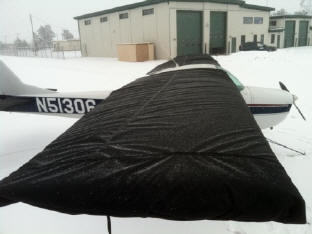
-
Is your airplane
equipped with wheel fairings? Slush-covered runways and temperatures hovering
close to the freezing point can fill those wheel fairings with ice. Climbing
into freezing temperatures will freeze this slush. Consider this factor when
flying a retractable as well, and let those wheels/tires hang out there in the
breeze and spin a bit longer after takeoff from a slush-covered runway to dry
them off a bit prior to retraction.
-
Is your airplane
equipped with a carbon-monoxide detector? If not, install one! Inexpensive
replaceable CO detectors are available. As temperatures cool, we use the cabin
heat more often, and if cracks have developed in the muffler system over the
summer, your first indication of this potentially deadly threat might be a
screaming headache or worse. CO is colorless, odorless and deadly. Take no
chances.
-
On the subject
of carbon monoxide, pay particular attention during your preflight inspections
to the exhaust system on your aircraft. A VERY close inspection of this critical
system in the fall (autumn) is a great idea and could save your life. Look for
cracks, loose clamps, etc. If in doubt, talk to your A&P for tips on what to
look for.
-
Do you carry
survival gear
in your airplane? You should?even if you never really need it. Carrying some
survival gear can offer alternatives when you divert due to weather to a small
field with no services, and where everything is locked up. Go over your survival
gear and change out a few "summer" items for "winter" items, and ensure that
everything is in good condition.
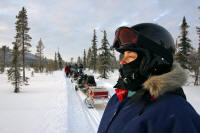
-
We also
recommend carrying a Portable Locator Beacon along with a few items of personal
survival gear on your person any time you fly. The latest generation of PLBs are
slightly larger than a cell phone and cost less than $300. In an emergency,
these devices can send a signal to the Rescue Coordination Center and get help
on the way. The "poor man's PLB" is a cell phone; that said, cellular coverage
is very spotty outside towns. And, if you crash in town, well... you probably
won't need either a PLB or a cell phone!
 Check the
plane's tire inflation. Aircraft tires contain a low volume of air, and cold
temperatures can decrease the tire pressure substantially. Check the
plane's tire inflation. Aircraft tires contain a low volume of air, and cold
temperatures can decrease the tire pressure substantially.
-
Carefully
checking your airplane's battery at the onset of winter weather will save you
considerable trouble once temperatures drop. Frequently, a weak battery will
suffice right up till the temperatures drop a bit, then, "Click...." nothing! A
check of electrolyte levels and battery voltage is easy and is considered
preventive maintenance. If your airplane is flown infrequently in winter,
consider having a trickle-charger installed to keep it charged between flights.
-
The end of
summer is also a good time to change your engine oil and start the winter with
fresh oil. If you run straight-weight oil in summer, you may want to switch to
multi-viscosity oil in winter.
-
Sometime between
the first hard frost and the onset of really cold weather, take the opportunity
to thoroughly clean your windshield and windows. If you park in an unheated
hangar or outdoors, this might be your last chance to thoroughly clean that
collection of bugs off the windows before spring! Your airplane will also
benefit from an airframe wash before winter.
 We need
to recalibrate our thinking about flying weather as we go into winter. Winter
weather presents very different challenges to flight safety than summer. Icing
is a very real threat, winds are often stronger and frequently gusty, and
winter-weather systems often move faster. As a consequence, we need to shift our
weather THINKING to more of a strategic mind-set, as opposed to the more
tactical approach we may be able to get away with in summer flying. Planning a
cross-country flight of any significant distance in winter should include a good
bit of planning well before the planned trip, and if at all possible, dates
should be flexible. We need
to recalibrate our thinking about flying weather as we go into winter. Winter
weather presents very different challenges to flight safety than summer. Icing
is a very real threat, winds are often stronger and frequently gusty, and
winter-weather systems often move faster. As a consequence, we need to shift our
weather THINKING to more of a strategic mind-set, as opposed to the more
tactical approach we may be able to get away with in summer flying. Planning a
cross-country flight of any significant distance in winter should include a good
bit of planning well before the planned trip, and if at all possible, dates
should be flexible.
Suggested
Aircraft Survival Kit Packing List
-
Case
-
*Water, .5 liter
bottles, 8 ea 12 Months from purchase
-
Cup, Canteen
-
Stove, Canteen
Cup
-
Fuel, Trioxane,
3 pkg (2 boxes) 5 years from purchase
-
*Food Bar,
Datrex, 3600 Kcal, 1 ea As indicated
-
Space Rescue
Blanket, 4 ea
-
Space Rescue
Sleeping Bag, 4 ea
-
Parachute Cord,
550#, 50? 2 ea
-
Knife or
multitool
-
Matches, strike
anywhere 12 months
-
Match case,
waterproof
-
Candle, long
burning 2 ea
-
*Aerial Flares
3/pkg 2 As indicated
-
*Smoke flares As
indicated
-
See-Rescue Panel
-
Flashlight,
waterproof AA size, spare bulb
-
Lithium
batteries AA Energizer 2-pack, 2 ea 12 months from purchase
-
Trash bag, 4 ea
-
Plastic bag,
ziplock, qt size, 4 ea
-
Plastic bag,
ziplock, pt size, 4 ea
-
Packing list,
laminated
-
Luggage tag with
weight, cube, inspection date
-
Notebook,
waterproof
-
Pencil, wood,
with eraser
-
Survival manual,
AFP 64-5 (waterproof)
-
Signal mirror,
on lanyard, with whistle
-
*First aid kit
(in ziplock bag) containing: 12 months
-
= Bandaids 12 ea
-
= Gauze pad 4x4
2/pkg 8 pkg
-
= *Iodine
solution 15cc btl
-
= Triangular
bandage 2 ea
= Tape, waterproof or athletic, 1? roll
-
= Dressing,
field individual 4 ea
-
= *Tablets,
water purification iodine base 1 btl As indicated
-
= *Analgesic,
non-prescription 12 /pkg As indicated
* Expires,
requires inspection and replacement
|

|
Back to:
Safety in
Aviation |
|

|
Community
Education |
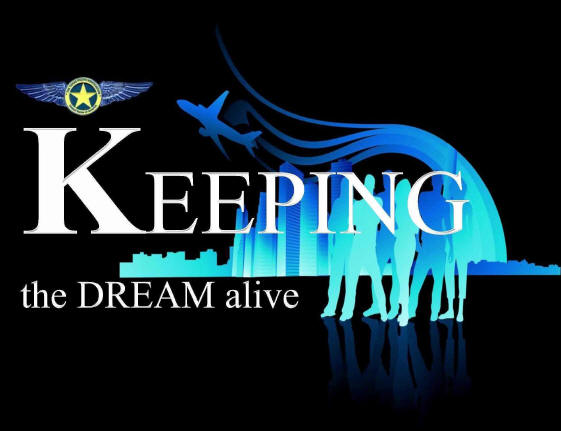
? The Texas Pilots
Association
|
|
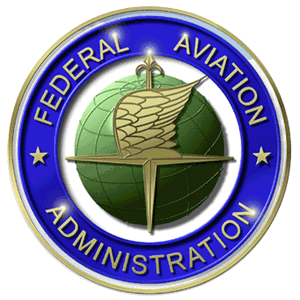
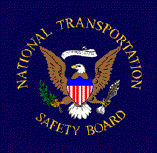
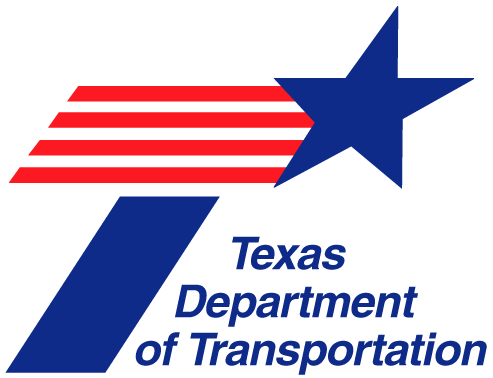

|

© Copyright, Texas Pilots Association, All rights reserved.
|
|
|


